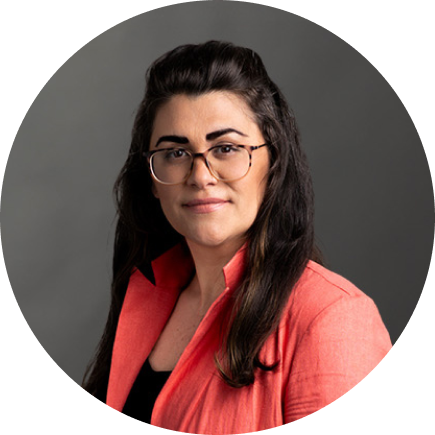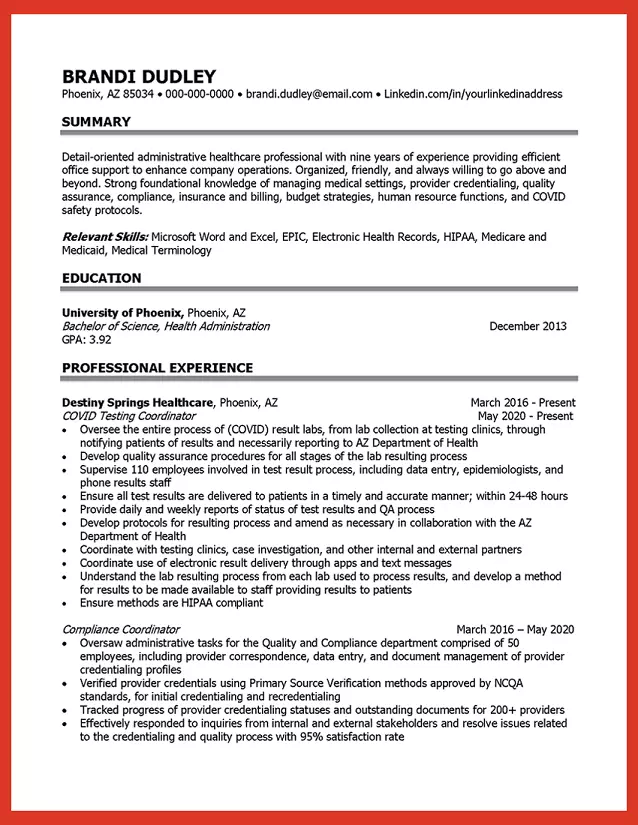Rethinking the resumé: How skills are changing the way we talk about jobs and education

Written by Elizabeth Exline

Reviewed by Jessica Roper, MBA, director of Career Services at University of Phoenix

What is it about resumés that can render the most accomplished of candidates about as confident as a high schooler applying for a first job? The answer depends on the person to some extent, but surely the fact that a whole industry has grown up around writing resumés points to at least one inescapable truth: There’s an art to writing an effective resumé — and that art changes frequently.
Take as an example the latest trend to hit the job market: digital credentialing. Digital credentialing is a clear and immediately identifiable way to convey and verify which skills a person has. These digital credentials showcase what a person has done in a validated way and are most often vetted by a third party, such as a university or a business. One type of digital credential, a digital badge, can appear as a small icon on a person’s digital profile to visually represent what has been attained.
Each badge also carries its own “metadata,” the information about what the person accomplished to acquire the badge. So, where job applicants might’ve once simply listed a litany of skills on their resumé and prospective employers had to take their word for it, digital credentialing means another party has assessed and verified those skills, and that adds a layer of credibility.

“It’s not enough that you have a piece of paper that says you have this degree, or you’ve worked for 10 years at X company,” explains Heather Livingston, a career coach at University of Phoenix (UOPX). “That’s all great, but do you have the skills to perform the job?”
More importantly, can you show what you did to demonstrate those skills? Skills are increasingly expected to be verifiable, which is an important insight for anyone wanting to grow in a current job or seek a new career. As a result, it’s changing the way we talk about everything in the career sector.
Call it like you see it
In an age where both content and social media posts often appear as little more than a captioned image, the push to distill a candidate’s qualifications to a bulleted list of skills comes as no surprise. People are in a hurry and don’t have time to read through long paragraphs of experience. Applicant tracking systems usually take the first pass at resumés anyway.
But after a moment of silence for the flowery, colorful and even photographic resumés of yore (remember when it was recommended you add a headshot?), you can begin to appreciate what this skills-driven approach has to offer. Namely, it gets to the point.

“The 21st-century workforce is experiencing a shift as in-demand skills [become more prevalent] in job postings alongside the academic requirements,” explains Eve Krahe Billings, PhD, dean of academic innovation and evaluation at University of Phoenix.
The problem for many job seekers is determining which skills they actually have. Do you have strong corporate communication skills? Are you a leader? Are you proficient in team-building or graphic design or digital marketing?
Can you prove it?
Introducing skills mapping and digital badging
The University’s response to this quandary has been not only to teach career-relevant skills but to develop a way to identify and share which skills current students and graduates have.
The process starts in the classroom. “The University has always focused on career-relevant curriculum,” Billings explains. “What we’ve done in this new iteration is maintain academic rigor and the important socialization that occurs within the context of higher education, while doubling down on really articulating, clarifying and highlighting for students and employers what skills are all about and why they matter.”
What does that mean on a day-to-day basis?
- Making the connection clear: Skills-tagging aligns curriculum to in-demand skills.
- Real-time progress tracking: A groundbreaking, UOPX-designed skills profile where students can see in real time the skills they’ve earned.
- Digital credentialing: A process in which students earn an icon or badge, which they can add to their digital profile (think LinkedIn® and related sites) to showcase verified skills publicly.
Students may find this approach especially helpful. As Billings notes, “Learners may struggle associating classroom learning to in-demand skills and thus have trouble telling the story of that learning in a current job or when searching for something new. Skills-tagging, and translating these skills where applicable to digital credentials, bridges this gap.”
The process behind the badge
The skills-tagging process began in 2019 at the University and features a program-specific profile built by UOPX. Currently, the majority of UOPX students are enrolled in skills-tagged programs.
What differentiates this approach is not the fancy profile or even the digital badges. The magic, so to speak, is in the way students prove they have learned the skills taught in a given class.
Skills, Billings explains, are embedded “within authentic formative and summative assessments with detailed rubrics that show clear alignment from the academic content to the skills in question.”
Another way to put it: Students have to prove they have successfully learned a skill to the point where they can implement in a real-world original product, experiment, plan or paper. Depending on the course and skill, this proof could be a disaster-management strategy for clinicians or a lesson plan for gifted students, Billings says.
When applied to a badge, the badge’s metadata contains the information about what the student produced.
To create these badges, UOPX has teamed up with badging provider Credly. Badges, combined with the skills profile, empower students to identify their skills and confidently share that information with employers in a language they understand.
Putting theory to practice
Whether you have the digital badges and identified skills of a UOPX student or simply a solid grasp of your skill set after enough years on the job, there comes a time when you must convey to potential employers what you bring to the table. And that, as we have seen, is constantly evolving.
A job description is the perfect place to start, Livingston says. Look at which skills a position calls for to see how your skill set lines up. Then, pepper your summary of qualifications with those keywords.
Below the summary, consider adding a section devoted to a bulleted list of skills. These should include a solid mix of hard skills (think Python for an IT professional or QuickBooks for an accounting executive) and soft skills (like communication and negotiation). If you have digital badges, you can add them in the skills section as well as on your LinkedIn profile.
The skills section is important, Livingston says, because human recruiters can easily skim it and applicant tracking software can easily identify it.
The experience section that follows the skills section should go beyond listing responsibilities, Livingston adds, and provide quantifiable data that supports your identified skill set. So, if you claim to have skills in medical coding, for example, be sure your experience supports that with information about how you used your coding skills to improve efficiencies or outcomes.
New graduates who lack job experience can instead list relevant classes. “You want to look at three, maybe four key courses that were part of your program where you learned these skills the employer is looking for,” Livingston says. “Don’t put any classes on your resumé that are not specifically relevant to the job you want to perform.”
It’s possible to channel the benefits of skills identification outside of your resumé too. For example, Livingston points out that on LinkedIn, your colleagues can endorse your skill set and write recommendations that humanize you as a candidate.
Interviewing offers another opportunity to align your skills with real-world examples. So, be prepared to offer examples for every skill you add to your resumé, even if they happened outside of the office. (It’s OK to share personal stories that illustrate your skills, as long as they are professionally appropriate, Livingston explains.)
While skills may be the next big thing in the world of job recruitment and hiring, it’s early days yet. And skills didn’t just come out of nowhere — learners should expect their higher education experience to show a clear alignment between their academic program and the skills associated with it. The alignment helps students and graduates leverage an up-and-coming trend to their advantage.
LinkedIn is a registered trademark of LinkedIn Corp. and its affiliates in the U.S. and/or other countries.

ABOUT THE AUTHOR
Elizabeth Exline has been telling stories ever since she won a writing contest in third grade. She's covered design and architecture, travel, lifestyle content and a host of other topics for national, regional, local and brand publications. Additionally, she's worked in content development for Marriott International and manuscript development for a variety of authors.

ABOUT THE REVIEWER
Jessica Roper, University of Phoenix director of Career Services, is a seasoned leader with over 15 years of experience in leadership within higher education. She has honed her expertise in student services and career development and is passionate about helping others discover and refine their skills.
This article has been vetted by University of Phoenix's editorial advisory committee.
Read more about our editorial process.
Read more articles like this:



